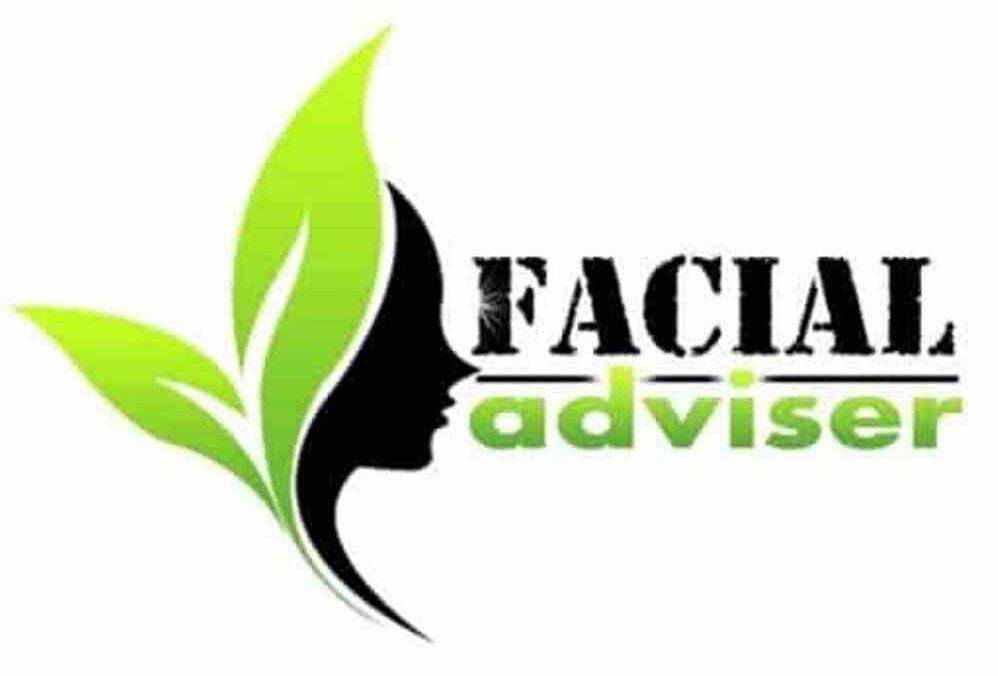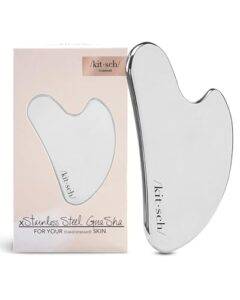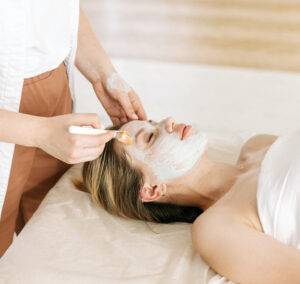This Site Is A Participant In The Amazon Services LLC Associates Program. We may earn money or products from Amazon or the companies mentioned in this post.
Facial extractions typically take around 24 to 48 hours to heal. During this time, it’s important to avoid any harsh skincare products or activities that could further irritate the affected area.
Facial extractions are a popular skincare treatment for removing blackheads, whiteheads, and other impurities from the skin. Although the procedure is relatively quick, it’s natural to wonder how long it will take for the skin to fully heal. Typically, facial extractions take around 24 to 48 hours to heal, depending on the individual’s skin type and the severity of the extraction.
During this time, it’s essential to avoid harsh skincare products and activities that could further irritate the affected area. In this article, we’ll delve deeper into the healing process for facial extractions, including what to expect and how to care for your skin during the healing period.

Credit: theeverygirl.com
Understanding Facial Extractions
Facial extractions are a popular method of deep-cleaning the skin. They involve physically removing impurities such as blackheads, whiteheads, and pimples from the skin’s surface. Although many beauty salons and spas perform facial extractions, they can also be done at home with the right tools and knowledge.
Definition Of Facial Extractions
- Facial extractions involve the physical removal of impurities from the upper layer of the skin, including blackheads, whiteheads, and pimples.
- The procedure is typically done with the help of a trained esthetician, although it can also be done at home using specialized tools.
- Facial extractions are meant to deep-clean the skin and leave it looking brighter, smoother, and clearer.
Reasons For Facial Extractions
Facial extractions are a popular skincare practice for several reasons:
- Clearer skin: By physically removing impurities from the skin’s surface, facial extractions can help clear up acne, blackheads, and other blemishes.
- Improved complexion: Riding the skin of dead skin cells, oil, and other impurities can leave the complexion looking brighter, smoother, and more even.
- Better product absorption: Once the skin is free of buildup, it can more readily absorb skincare products.
- Prevention of future breakouts: By removing existing impurities, facial extractions can also help prevent future breakouts from occurring.
As with any skincare treatment, it’s important to carefully consider the potential risks and benefits of facial extractions before deciding to undergo the procedure. Those with sensitive skin or underlying skin conditions should consult with a dermatologist before attempting facial extractions at home.
What Happens After Facial Extractions
Facial extractions are one of the most popular methods for removing blackheads, whiteheads, and other impurities from the skin. While the procedure itself is not painful, it can be uncomfortable and take some time for the skin to heal. If you’re wondering what happens after facial extractions and how long it takes for your skin to recover, keep reading!
Reaction Of Your Skin After Facial Extractions
After facial extractions, your skin may experience some redness, inflammation, and sensitivity. This is completely normal and should subside within a few hours to a few days. It’s important to avoid touching your face or applying any harsh products that may irritate the skin.
Instead, use a gentle cleanser and moisturizer to soothe the area and promote healing.
Possible Side Effects Of Facial Extractions
While facial extractions are generally safe, there is a small risk of side effects such as bruising, scarring, and infection. These side effects can be avoided by choosing a qualified and experienced esthetician who follows proper hygiene and sterilization protocols.
To minimize your risk of complications, it’s important to follow your esthetician’s aftercare instructions and avoid picking or squeezing the treated area.
Timeline Of Events After Facial Extractions
The healing process after facial extractions can vary depending on the individual and the extent of the treatment. Here is a general timeline of events you can expect:
- Immediately after the treatment: Your skin may be red, inflamed, and slightly swollen. You may also notice some small pinpoint bleeding where the extractions were performed.
- 1-2 days post-treatment: The redness and inflammation should start to subside. You may notice some dryness and flakiness as the skin begins to heal.
- 3-5 days post-treatment: The skin should start to feel smoother and clearer. Any dryness and flakiness should be reduced, and the skin’s natural oil production should start to normalize.
- 1-2 weeks post-treatment: Your skin should be fully healed and back to its normal state. You may notice a reduction in the appearance of blackheads and whiteheads, and overall improved skin texture and tone.
Healing after facial extractions can take some time, but with gentle aftercare and patience, your skin will be smooth and clear in no time. Just remember to avoid touching your face, follow your esthetician’s aftercare instructions, and be gentle with your skin during the healing process.
Factors Affecting Healing Time
Facial extraction is a common skin treatment that cleanses the skin’s pores and removes impurities and blackheads. While the procedure may leave the skin looking clear and refreshed, it could also cause skin irritation or redness, depending on several factors.
Knowing how long it takes your skin to heal after facial extractions is crucial in preventing discomfort or damage to your skin. Below are some factors that affect the healing time of facial extractions.
Skin Type And Condition
Skin type and condition play a vital role in how quickly your skin heals after facial extractions. The following are some factors you should consider:
- Oily skin may take longer to heal than dry skin because of the overproduction of sebum
- Sensitive skin may experience redness, swelling, or rash after facial extractions, leading to a longer healing time.
- Skin with pre-existing conditions such as eczema, rosacea, or psoriasis may be more prone to irritation and thus take longer to heal.
Severity Of Extractions
The severity of the extractions also affects how long your skin takes to heal. Here are some considerations:
- The size and depth of the extracted area determine how long it takes the skin to recover.
- Extractions performed with too much pressure could cause bruising, swelling, or even scarring that prolongs the healing process.
- Over-extraction of the skin could lead to over-drying, causing skin peeling and flaking.
Proper Aftercare
Proper aftercare is crucial in preventing skin damage, reducing inflammation, and promoting quicker healing time. Here are some aftercare recommendations:
- Avoid wearing makeup or using skincare products immediately after facial extractions as this could irritate the skin.
- Use a gentle, alcohol-free cleanser to prevent drying out your skin, and apply a soothing moisturizer to reduce inflammation.
- Avoid sun exposure and wear sunscreen to protect your skin from uv damage, especially after extractions.
How long it takes your skin to heal after facial extractions depends on several factors, such as skin type and condition, severity of extractions, and following proper aftercare. Be sure to consult with a skincare professional and follow their guidelines for a safe and speedy recovery.
How Long Does It Take For Facial Extractions To Heal?
Facial extractions can be an effective way to clean and unclog your pores. However, one key question most people have is how long it takes for facial extractions to heal. The healing process from such extraction can vary depending on several factors, such as the severity of the extraction and the aftercare taken to promote healing.
Healing Time For Minor Extractions
Minor extractions are those that do not break the skin and are limited to the surface of the skin. They are also known as comedones or blackheads. The good news about this type of extraction is that it usually does not take a long time to heal.
Here are some key points to keep in mind:
- Healing time can vary between individuals, but minor extractions may heal within a few hours up to a couple of days.
- Proper aftercare is key. Avoid touching the area or applying heavy skincare products that might clog the pores and delay healing.
- Keep the area clean and moisturized with gentle, non-irritating products to speed up the healing process.
Healing Time For Moderate Extractions
Moderate extractions involve breaking the skin, similar to whiteheads. In these instances, the area around the extraction is usually inflamed and sensitive to the touch. Here are some key points to keep in mind:
- Healing time can vary, but expect moderate extractions to take longer to heal than minor extractions. It can take up to a week for the skin to fully heal.
- It is crucial to keep the area clean and dry to avoid infection, which can further delay the healing process.
- Avoid using harsh skincare products and makeup on the affected area until it has fully healed to avoid prolonging the recovery process.
Healing Time For Severe Extractions
Severe extractions are those that result in damage to the skin, leaving open wounds or scabs. Examples of severe extractions include cysts or pimples that have ruptured. Here are some key points to keep in mind:
- Healing time for severe extractions can take longer and can range from a week to several months or longer, depending on the severity of the extraction.
- It’s essential to keep the area clean and moist to promote healing and avoid infection.
- Avoid touching the affected area or picking at scabs, as this can cause further damage to the skin and impact the healing process.
The healing time for facial extractions can differ based on the severity of the extraction and aftercare taken to promote healing. Minor extractions typically heal within a couple of days, while moderate and severe extractions can take longer. Be sure to keep the affected area clean and moisturized, avoid irritating skincare products, and follow proper aftercare instructions to ensure a speedy recovery.
Aftercare Tips And Recommendation
Facial extractions can be a great way to remove impurities from your skin and give it a fresh, rejuvenated look. However, like any other cosmetic treatment, there are certain steps that you need to take to make sure your skin heals properly.
In this blog post, we’ll be focusing on aftercare tips and recommendation to help your skin recover after facial extractions. Let’s dive in!
Dos And Don’Ts After Facial Extractions
When it comes to aftercare for facial extractions, there are certain things that you should and shouldn’t do to ensure that your skin heals properly. Here are a few dos and don’ts to keep in mind:
- Do keep your skin clean: After facial extractions, it is essential to keep your skin clean and free of any makeup. Use a gentle, non-abrasive cleanser and warm water to cleanse the skin twice a day.
- Do use a moisturizer: Your skin may be dry and sensitive after extractions, so it’s important to keep it moisturized. Use a light, oil-free moisturizer to prevent any skin dryness.
- Don’t pick at your skin: Picking at your skin can cause further irritation and inflammation, leading to further breakouts. It’s important to let the skin heal naturally and avoid any picking or scratching.
- Don’t use harsh skincare products: Avoid using any products that contain alcohol, retinoids, or chemical exfoliants immediately after facial extractions. These can further irritate the skin and delay the healing process.
Products And Ingredients To Avoid
While there are several products and ingredients that can aid in the healing process after facial extractions, there are also some that you should avoid. Here are a few products and ingredients to stay away from:
- Alcohol-based toners: These can be very drying and irritate the skin, leading to further inflammation.
- Retinoids: Avoid using any products that contain retinoids, such as retin-a or tazorac, for at least one week after facial extractions. These can further irritate the skin and delay the healing process.
- Chemical exfoliants: Stay away from any products that contain alpha-hydroxy acids (ahas) or beta-hydroxy acids (bhas), as these can also be too harsh on the skin after extractions.
Best Skincare Products For After Facial Extractions
As mentioned earlier, it’s essential to keep your skin moisturized and hydrated after facial extractions. Here are a few of the best skincare products to use during the healing process:
- A gentle, non-abrasive cleanser: Use a cleanser that is specifically formulated for sensitive skin to avoid any further irritation.
- A lightweight, oil-free moisturizer: Opt for a moisturizer that contains hyaluronic acid or glycerin to keep your skin hydrated.
- Sunscreen: After facial extractions, your skin may be more susceptible to sun damage, so it’s important to use a sunscreen with an spf of at least 30 to protect your skin from harmful uv rays.
After facial extractions, it’s important to take care of your skin to ensure proper healing. Follow the dos and don’ts mentioned above, avoid any harsh products or ingredients, and use gentle skincare products to keep your skin healthy. With a little bit of tlc, your skin will be looking and feeling its best in no time!
Frequently Asked Questions Of How Long Does It Take For Facial Extractions To Heal?
How Long Does It Take For Facial Extractions To Heal?
Facial extraction healing time varies from person to person. Skin sensitivity, the number of extractions, and the aftercare plan affect the healing process. Typically, the skin heals within 3 to 5 days.
What Are The Side Effects Of Facial Extractions?
Facial extractions can cause redness, swelling, and tenderness. Your skin may be exposed to infection if the facialist carries out the procedure incorrectly. Ensure the product is non-comedogenic, and you use sunscreen to avoid any side effects.
Can I Wear Makeup After Facial Extractions?
It is advisable to avoid wearing makeup for at least 24 hours after facial extractions to let the skin heal and breathe. Using non-comedogenic makeup reduces the risk of clogging the pores. Check with the aesthetician to see when it is safe to resume using makeup.
How Often Should I Get A Facial Extraction?
Getting facial extractions too often can damage the skin. However, the frequency depends on the skin type. People with oily skin should get facial extraction once a month, while people with sensitive skin should get it once every three months.
How Can I Care For My Skin After Facial Extractions?
Applying a cold compress, avoiding the sun, drinking plenty of water, and using a moisturizer are effective ways to care for your skin after facial extractions. Avoid harsh chemicals and exfoliants for at least 48 hours after the procedure.
Conclusion
After going through this article, you should now have a good idea of how long it takes for facial extractions to heal. Remember that everyone’s skin is different, which means that recovery time can vary from person to person. However, by adhering to the post-extraction care tips outlined in this article, you can surely speed up the healing process and avoid potential complications.
It’s important to make sure the condition of your skin is optimal before getting any facial extractions done. You should be upfront with your skincare professional about any medication you’re taking or pre-existing medical conditions you have. Moreover, refrain from touching your face or applying makeup immediately after extractions as this could lead to further breakouts or infections.
With a good skincare routine and professional help, you can eventually have a clear, bright and glowing complexion in no time!

Amelia Varley is a professional beauty blogger and freelance writer with a passion for all things skincare, makeup, and holistic wellness. With years of experience in the beauty industry, Amelia shares expert tips, product reviews, and innovative beauty routines with her readers. Her writing is driven by a desire to empower people to look and feel their best through mindful beauty practices. When she’s not writing, Amelia enjoys experimenting with the latest beauty trends and exploring the connection between self-care and confidence.





